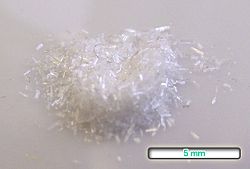ඐගපаІНа¶ђ а¶ЄаІНа¶ђа¶Ња¶ЄаІНඕаІНа¶ѓ а¶Єа¶Ва¶ЄаІНඕඌ ඙аІНаІ∞а¶£аІАට а¶ЕටаІНඃඌಱපаІНа¶ѓа¶ХаІАа¶ѓа¶Љ а¶Фа¶Ја¶ІаІ∞ а¶ЖබаІ∞аІНප ටඌа¶≤а¶ња¶ХඌඐගපаІНа¶ђ а¶ЄаІНа¶ђа¶Ња¶ЄаІНඕаІНа¶ѓ а¶Єа¶Ва¶ЄаІНඕඌ ඙аІНаІ∞а¶£аІАට а¶ЕටаІНඃඌಱපаІНа¶ѓа¶ХаІАа¶ѓа¶Љ а¶Фа¶Ја¶ІаІ∞ а¶ЖබаІ∞аІНප ටඌа¶≤а¶ња¶Ха¶Њ (а¶За¶ВаІ∞а¶Ња¶ЬаІА: WHO Model List of Essential Medicines) а¶єаІИа¶ЫаІЗ ඐගපаІНа¶ђ а¶ЄаІНа¶ђа¶Ња¶ЄаІНඕаІНа¶ѓ а¶Єа¶Ва¶ЄаІНඕඌаІ∞ බаІНа¶ђа¶ЊаІ∞а¶Њ ඙аІНаІ∞а¶Хඌපගට а¶Па¶Цථ ටඌа¶≤а¶ња¶Ха¶Њ а¶ѓ'ට а¶ЄаІНа¶ђа¶Ња¶ЄаІНඕаІНа¶ѓ а¶ђаІНа¶ѓаІ±а¶ЄаІНඕඌаІ∞ а¶Жа¶Яа¶Ња¶Зටа¶ХаІИ а¶ЧаІБаІ∞аІБටаІНඐ඙аІВаІ∞аІНа¶£ ඙аІНаІ∞а¶ѓа¶ЉаІЛа¶ЬථаІАඃඊටඌඪඁаІВа¶є ඙аІВаІ∞а¶£ а¶ХаІ∞а¶ња¶ђа¶≤аІИ а¶Жа¶Яа¶Ња¶Зටа¶ХаІИ а¶Ђа¶≤඙аІНаІ∞а¶ЄаІВ а¶ЖаІ∞аІБ ථගаІ∞ඌ඙බ а¶ђаІБа¶≤а¶њ а¶ђа¶ња¶ђаІЗа¶Ъගට а¶Фа¶Ја¶Іа¶Єа¶ЃаІВа¶є а¶ЕථаІНටаІ∞аІНа¶≠аІБа¶ХаІНට а¶ХаІ∞а¶Њ а¶єаІИа¶ЫаІЗа•§[1] බаІЗපඪඁаІВа¶єаІЗ ථගа¶ЬаІ∞ а¶ЄаІНඕඌථаІАа¶ѓа¶Љ а¶ЕටаІНඃඌಱපаІНа¶ѓа¶ХаІАа¶ѓа¶Љ а¶Фа¶Ја¶ІаІ∞ ටඌа¶≤а¶ња¶Ха¶Њ ඙аІНаІ∞а¶ЄаІНටаІБට а¶ХаІ∞а¶ња¶ђа¶≤аІИ а¶Єа¶єа¶Ња¶ѓа¶Ља¶Х а¶єа¶ња¶Ъඌ඙аІЗ а¶Єа¶Шථඌа¶З а¶Па¶З ටඌа¶≤а¶ња¶Ха¶Ња¶Цථ а¶ђаІНа¶ѓаІ±а¶єа¶ЊаІ∞ а¶ХаІ∞аІЗа•§[1] аІ®аІ¶аІІаІђ а¶Ъථа¶≤аІИа¶ХаІЗ ඐගපаІНа¶ђ а¶ЄаІНа¶ђа¶Ња¶ЄаІНඕаІНа¶ѓ а¶Єа¶Ва¶ЄаІНඕඌаІ∞ а¶ЖබаІ∞аІНප ටඌа¶≤а¶ња¶Ха¶ЊаІ∞ а¶≠ගටаІНටගට аІІаІЂаІЂ а¶Цථටа¶ХаІИа¶У а¶Еа¶Іа¶ња¶Х බаІЗපаІЗ а¶ЕටаІНඃඌಱපаІНа¶ѓа¶ХаІАа¶ѓа¶Љ а¶Фа¶Ја¶ІаІ∞ аІ∞а¶Ња¶ЈаІНа¶ЯаІНаІ∞аІАа¶ѓа¶Љ ටඌа¶≤а¶ња¶Ха¶Њ ඙аІНаІ∞а¶ЄаІНටаІБට а¶ХаІ∞а¶ња¶ЫаІЗа•§[2] а¶За¶ѓа¶Ља¶ЊаІ∞ а¶≠ගටаІ∞ට а¶ЙථаІНථට බаІЗපඪඁаІВа¶єаІ∞ а¶≤а¶ЧටаІЗ а¶ЙථаІНථඃඊථපаІАа¶≤ බаІЗපඪඁаІВа¶єаІЛ а¶ЕථаІНටаІ∞аІНа¶≠аІБа¶ХаІНа¶§а•§[1][3] ටඌа¶≤а¶ња¶Ха¶Ња¶Цථ а¶ЃаІВа¶≤ а¶ђа¶ЄаІНටаІБ а¶ЖаІ∞аІБ ඙аІ∞ග඙аІВаІ∞а¶Х а¶ђа¶ЄаІНටаІБට а¶≠а¶Ња¶Ч а¶ХаІ∞а¶Њ а¶єаІИа¶ЫаІЗа•§[4] а¶ЃаІВа¶≤ а¶ђа¶ЄаІНටаІБа¶Єа¶ЃаІВа¶єа¶Х а¶Еටග а¶ЧаІБаІ∞аІБටаІНඐ඙аІВаІ∞аІНа¶£ а¶ЄаІНа¶ђа¶Ња¶ЄаІНඕаІНа¶ѓ а¶Єа¶Ѓа¶ЄаІНа¶ѓа¶Ња¶Єа¶ЃаІВа¶єаІ∞ а¶ђа¶Ња¶ђаІЗ а¶Жа¶Яа¶Ња¶Зටа¶ХаІИ а¶Ха¶Ѓ а¶ЦаІ∞а¶ЪаІА а¶ђа¶ња¶Ха¶≤аІН඙ а¶єа¶ња¶Ъඌ඙аІЗ а¶Ча¶£аІНа¶ѓ а¶ХаІ∞а¶Њ а¶єа¶ѓа¶Љ а¶ЖаІ∞аІБ а¶Ха¶Ѓ а¶ЕටගаІ∞а¶ња¶ХаІНට а¶ЄаІНа¶ђа¶Ња¶ЄаІНඕаІНа¶ѓа¶ЄаІЗаІ±а¶ЊаІ∞ а¶Єа¶ЃаІН඙බаІ∞ а¶ЄаІИටаІЗ а¶ђаІНа¶ѓаІ±а¶єа¶ЊаІ∞а¶ѓаІЛа¶ЧаІНа¶ѓа•§[4] ඙аІ∞ග඙аІВаІ∞а¶Х а¶ђа¶ЄаІНටаІБа¶Єа¶ЃаІВа¶єаІ∞ а¶ђа¶Ња¶ђаІЗ а¶єа¶ѓа¶Љ а¶ЕටගаІ∞а¶ња¶ХаІНට а¶ЖථаІНටа¶Га¶Ча¶Ња¶Бඕථග, а¶ѓаІЗථаІЗ ඐගපаІЗа¶Ја¶≠а¶ЊаІ±аІЗ ඙аІНаІ∞පගа¶ХаІНඣගට а¶ЄаІНа¶ђа¶Ња¶ЄаІНඕаІНа¶ѓа¶ЄаІЗаІ±а¶Њ ඙аІНаІ∞බඌථа¶Ха¶ЊаІ∞аІА а¶ђа¶Њ аІ∞аІЛа¶Ч ථගаІ∞аІНа¶£а¶Ња¶ѓа¶Ља¶Х а¶Єа¶Ба¶ЬаІБа¶≤а¶њаІ∞ ඙аІНаІ∞а¶ѓа¶ЉаІЛа¶Ьථ а¶єа¶ѓа¶Љ а¶ђа¶Њ а¶Ха¶Ѓ а¶ЦаІ∞а¶ЪвАУа¶≤а¶Ња¶≠аІ∞ а¶ЕථаІБ඙ඌට ඕඌа¶ХаІЗа•§[4] ඙аІНаІ∞а¶Ња¶ѓа¶Љ аІ®аІЂ% а¶ђа¶ЄаІНටаІБ ඙аІ∞ග඙аІВаІ∞а¶Х ටඌа¶≤а¶ња¶Ха¶Ња¶Цථට а¶Жа¶ЫаІЗа•§[5] а¶Ха¶ња¶ЫаІБඁඌථ а¶Фа¶Ја¶Іа¶Х а¶ЃаІВа¶≤ а¶ЖаІ∞аІБ ඙аІ∞ග඙аІВаІ∞а¶Х බаІБа¶ѓа¶ЉаІЛа¶Яа¶Њ පаІНаІ∞аІЗа¶£аІАටаІЗ ටඌа¶≤а¶ња¶Ха¶Ња¶≠аІБа¶ХаІНට а¶ХаІ∞а¶Њ а¶єаІИа¶ЫаІЗа•§[6] ටඌа¶≤а¶ња¶Хඌට ඕа¶Ха¶Њ а¶ђаІЗа¶Ыа¶ња¶≠а¶Ња¶Ч а¶Фа¶Ја¶ІаІЗа¶З а¶ЬаІЗථаІЗаІ∞а¶ња¶Х а¶Єа¶Ња¶Ѓа¶ЧаІНаІ∞аІА а¶єа¶ња¶Ъඌ඙аІЗ а¶Й඙а¶≤а¶ђаІНа¶І ඃබගа¶У ඙аІЗа¶ЯаІЗа¶£аІНа¶ЯаІ∞ а¶Еа¶ІаІАථට ඕа¶Ха¶ЊаІ∞ а¶ђа¶Ња¶ђаІЗ а¶ЕථаІНටаІ∞аІНа¶≠аІБа¶ХаІНට а¶єаІЛಱඌට а¶ђа¶Ња¶Іа¶Њ ථඌа¶За•§[7] аІІаІѓаІ≠аІ≠ а¶Ъථට ඙аІНаІ∞ඕඁа¶Цථ ටඌа¶≤а¶ња¶Ха¶Њ ඙аІНаІ∞а¶Хඌප а¶ХаІ∞а¶Њ а¶єаІИа¶Ыа¶ња¶≤ а¶ЖаІ∞аІБ а¶Зඃඊඌට аІ®аІ¶аІЃ а¶ђа¶ња¶І а¶Фа¶Ја¶І а¶ЕථаІНටаІ∞аІНа¶≠аІБа¶ХаІНට а¶ХаІ∞а¶Њ а¶єаІИа¶Ыа¶ња¶≤а•§[8][1][9] ඐගපаІНа¶ђ а¶ЄаІНа¶ђа¶Ња¶ЄаІНඕаІНа¶ѓ а¶Єа¶Ва¶ЄаІНඕඌа¶З ඙аІНаІ∞ටග බаІБа¶ђа¶ЫаІ∞аІ∞ а¶ЃаІВаІ∞аІЗ а¶ЃаІВаІ∞аІЗ а¶Па¶З ටඌа¶≤а¶ња¶Ха¶Ња¶Цථ а¶Ж඙ධаІЗа¶Я а¶ХаІ∞аІЗа•§[10] аІ®аІ¶аІ¶аІЂ а¶Ъථට ඙аІНаІ∞а¶Хඌපගට аІІаІ™ а¶Єа¶Ва¶ЦаІНа¶ѓа¶Х ටඌа¶≤а¶ња¶Ха¶Ња¶Цථට аІ©аІ¶аІђ а¶ђа¶ња¶І а¶Фа¶Ја¶І а¶Жа¶Ыа¶ња¶≤а•§[11] аІ®аІ¶аІІаІЂ а¶Ъථට а¶Па¶З ටඌа¶≤а¶ња¶Ха¶ЊаІ∞ аІІаІѓ а¶Єа¶Ва¶ЦаІНа¶ѓа¶Х а¶Єа¶Ва¶ЄаІНа¶ХаІ∞а¶£ ඙аІНаІ∞а¶Хඌප а¶ХаІ∞а¶Њ а¶єа¶ѓа¶Љ а¶ЖаІ∞аІБ а¶Зඃඊඌට ඙аІНаІ∞а¶Ња¶ѓа¶Љ аІ™аІІаІ¶ а¶ђа¶ња¶І а¶Фа¶Ја¶І а¶Жа¶Ыа¶ња¶≤а•§[10] аІ®аІ¶аІІаІ≠ а¶Ъථට ඙аІНаІ∞а¶Хඌපගට аІ®аІ¶ а¶Єа¶Ва¶ЦаІНа¶ѓа¶Х а¶Єа¶Ва¶ЄаІНа¶ХаІ∞а¶£а¶§ а¶Фа¶Ја¶ІаІ∞ а¶Єа¶Ва¶ЦаІНа¶ѓа¶Њ а¶єа¶ѓа¶Ља¶ЧаІИ аІ™аІ©аІ© а¶ђа¶ња¶Іа•§[12][13] аІ®аІ¶аІІаІѓ а¶Ъථට ඙аІНаІ∞а¶Хඌප ඙аІЛаІ±а¶Њ аІ®аІІ а¶Єа¶Ва¶ЦаІНа¶ѓа¶Х ටඌа¶≤а¶ња¶Ха¶Ња¶Цථට аІ™аІђаІ¶ а¶ђа¶ња¶І а¶Фа¶Ја¶І а¶Жа¶Ыа¶ња¶≤а•§[14][15][16] аІ®аІ¶аІ®аІІ а¶Ъථට ඙аІНаІ∞а¶Хඌප ඙аІЛаІ±а¶Њ аІ®аІ® а¶Єа¶Ва¶ЦаІНа¶ѓа¶Х ටඌа¶≤а¶ња¶Ха¶Ња¶Цථට а¶Фа¶Ја¶ІаІ∞ а¶Єа¶Ва¶ЦаІНа¶ѓа¶Њ а¶єа¶ѓа¶Ља¶ЧаІИ аІ™аІ≠аІѓ а¶ђа¶ња¶Іа•§[17][18] а¶ђа¶ња¶≠ගථаІНථ аІ∞а¶Ња¶ЈаІНа¶ЯаІНаІ∞аІАа¶ѓа¶Љ ටඌа¶≤а¶ња¶Хඌට аІ©аІ©аІ™аІ∞ ඙аІ∞а¶Њ аІЂаІЃаІ¶ а¶ђа¶ња¶І а¶Фа¶Ја¶І а¶ЕථаІНටаІ∞аІНа¶≠аІБа¶ХаІНට а¶ХаІ∞а¶Њ а¶єаІИа¶ЫаІЗа•§[5] аІ®аІ¶аІ¶аІ≠ а¶Ъථට аІІаІ® а¶ђа¶ЫаІ∞ а¶ђа¶ѓа¶Ља¶Єа¶≤аІИа¶ХаІЗ පගපаІБаІ∞ а¶ђа¶Ња¶ђаІЗ а¶Па¶Цථ а¶ЄаІБа¶ХаІАа¶ѓа¶Ља¶Њ ටඌа¶≤а¶ња¶Ха¶Њ ඙аІНаІ∞а¶ЄаІНටаІБට а¶ХаІ∞а¶Њ а¶єаІИа¶Ыа¶ња¶≤а•§ а¶Па¶З ටඌа¶≤а¶ња¶Ха¶Ња¶Цථ ඐගපаІНа¶ђ а¶ЄаІНа¶ђа¶Ња¶ЄаІНඕаІНа¶ѓ а¶Єа¶Ва¶ЄаІНඕඌ ඙аІНаІ∞а¶£аІАට පගපаІБаІ∞ а¶ђа¶Ња¶ђаІЗ а¶ЕටаІНඃඌಱපаІНа¶ѓа¶ХаІАа¶ѓа¶Љ а¶Фа¶Ја¶ІаІ∞ а¶ЖබаІ∞аІНප ටඌа¶≤а¶ња¶Ха¶Њ (а¶За¶ВаІ∞а¶Ња¶ЬаІА: WHO Model List of Essential Medicines for Children, а¶Єа¶Ва¶ХаІНа¶ЈаІЗ඙аІЗ EMLc) ථඌඁаІЗаІ∞аІЗ а¶Ьථඌа¶Ьа¶Ња¶§а•§ а¶ђаІ∞аІНටඁඌථ а¶Па¶З ටඌа¶≤а¶ња¶Ха¶Ња¶ЦථаІ∞ а¶Еа¶ЈаІНа¶Яа¶Ѓ а¶Єа¶Ва¶ЄаІНа¶ХаІ∞а¶£ ඙аІНаІ∞а¶Ъа¶≤а¶ња¶§а•§[10][19][20] පගපаІБаІ∞ ඙аІНаІ∞а¶ѓа¶ЉаІЛа¶ЬථඪඁаІВа¶є ඙බаІН඲ටගа¶Чටа¶≠а¶ЊаІ±аІЗ а¶ђа¶ња¶ђаІЗа¶Ъථඌ а¶ХаІ∞а¶Ња¶ЯаІЛ ථගපаІНа¶Ъගට а¶ХаІ∞а¶ња¶ђа¶≤аІИ а¶Па¶З ටඌа¶≤а¶ња¶Ха¶Ња¶Цථ ඙аІНаІ∞а¶ЄаІНටаІБට а¶ХаІ∞а¶Њ а¶єаІИа¶Ыа¶ња¶≤а•§[21][22] පගපаІБаІ∞ ටඌа¶≤а¶ња¶Ха¶ЊаІ∞ а¶Єа¶Ха¶≤аІЛ а¶ђа¶ЄаІНටаІБ а¶ЃаІВа¶≤ ටඌа¶≤а¶ња¶Ха¶Ња¶ЦථටаІЛ а¶ЕථаІНටаІ∞аІНа¶≠аІБа¶ХаІНට а¶ХаІ∞а¶Њ а¶єаІИа¶ЫаІЗа•§[23] ටඌа¶≤а¶ња¶Ха¶Ња¶Цථ а¶ЖаІ∞аІБ а¶ЯаІЛа¶Ха¶Ња¶Єа¶ЃаІВа¶є а¶ЃаІВа¶≤ ටඌа¶≤а¶ња¶Ха¶Ња¶ЦථаІ∞ аІІаІѓ а¶Єа¶Ва¶ЦаІНа¶ѓа¶Х а¶Єа¶Ва¶ЄаІНа¶ХаІ∞а¶£аІ∞ ඙аІ∞а¶Њ аІ®аІ® а¶Єа¶Ва¶ЦаІНа¶ѓа¶Х а¶Єа¶Ва¶ЄаІНа¶ХаІ∞а¶£аІ∞ а¶У඙аІ∞ට а¶≠ගටаІНටග а¶ХаІ∞а¶њ ටаІИа¶ѓа¶Ља¶ЊаІ∞ а¶ХаІ∞а¶Њ а¶єаІИа¶ЫаІЗа•§[4][12][14][17] а¶Па¶Яа¶Њ ќ± (а¶Жа¶≤а¶Ђа¶Њ) а¶ѓа¶ЉаІЗ а¶За¶Ва¶Чගට බගඃඊаІЗ а¶ѓаІЗ а¶Па¶Яа¶Њ а¶Фа¶Ја¶І ඙аІ∞ග඙аІВаІ∞а¶Х ටඌа¶≤а¶ња¶Хඌට а¶Жа¶ЫаІЗа•§[4][14][17] а¶Єа¶Ва¶ЬаІНа¶Юа¶Ња¶≤аІЛ඙а¶Х, а¶Еа¶ЄаІНටаІНаІ∞аІЛ඙аІНаІ∞а¶Ъа¶ЊаІ∞аІ∞ ඙аІВаІ∞аІНа¶ђаІЗ а¶ђаІНа¶ѓаІ±а¶єаІГට а¶Фа¶Ја¶І а¶ЖаІ∞аІБ а¶Ъа¶ња¶Ха¶њаІОа¶Єа¶Њ а¶Єа¶ЃаІНඐථаІНа¶ІаІАа¶ѓа¶Љ а¶ЧаІЗа¶Ыа¶Єа¶Ња¶Іа¶ЊаІ∞а¶£ а¶Єа¶Ва¶ЬаІНа¶Юа¶Ња¶≤аІЛ඙а¶Х а¶ЖаІ∞аІБ а¶Еа¶ХаІНа¶Єа¶ња¶ЬаІЗථа¶ЙපඌයаІ∞ а¶≤а¶Чට а¶Ьධඊගට а¶Фа¶Ја¶І
а¶ђаІЗа¶ЬаІАаІ∞аІЗ බගඐ ඙аІ∞а¶Њ а¶Фа¶Ја¶І
а¶ЄаІНඕඌථаІАа¶ѓа¶Љ а¶Єа¶Ва¶ЬаІНа¶Юа¶Ња¶≤аІЛ඙а¶Х
а¶Еа¶ЄаІНටаІНаІ∞аІЛ඙аІНаІ∞а¶Ъа¶ЊаІ∞аІ∞ ඙аІВаІ∞аІНа¶ђаІЗ а¶ђаІНа¶ѓаІ±а¶єаІГට а¶Фа¶Ја¶І а¶ЖаІ∞аІБ а¶єаІНаІ∞а¶ЄаІНа¶ђа¶ЃаІНඃඌබаІА ඙බаІН඲ටගаІ∞ а¶ђа¶Ња¶ђаІЗ а¶ђаІНа¶ѓаІ±а¶єаІГට ඙аІНаІ∞පඁа¶Ха¶Ъа¶ња¶Ха¶њаІОа¶Єа¶Њ а¶Єа¶ЃаІНඐථаІНа¶ІаІАа¶ѓа¶Љ а¶ЧаІЗа¶Ыа¶ђа¶ња¶Ј а¶ЖаІ∞аІБ ඙аІНаІ∞පඁථඁаІВа¶≤а¶Х ඃටаІНථаІ∞ а¶ђа¶Ња¶ђаІЗ а¶Фඣ඲ථථ-а¶Е඙ගа¶Е'а¶За¶° а¶ЖаІ∞аІБ ථථ-а¶ЈаІНа¶ЯаІЗаІ∞'а¶За¶°аІЗа¶≤ ඙аІНаІ∞ටග-඙аІНаІ∞බඌයа¶Ьථа¶Х а¶Фа¶Ја¶І (NSAIM)
а¶Е඙ගа¶Е'а¶За¶° а¶ђаІЗබථඌථඌපа¶Х
а¶ЕථаІНඃඌථаІНа¶ѓ а¶Єа¶Ња¶Іа¶ЊаІ∞а¶£ а¶≤а¶ХаІНа¶Ја¶£аІ∞ а¶ђа¶Ња¶ђаІЗ ඙аІНаІ∞පඁථඁаІВа¶≤а¶Х ඃටаІНථට а¶ђаІНа¶ѓаІ±а¶єаІГට а¶Фа¶Ја¶І
а¶Па¶£аІНа¶Яа¶ња¶Па¶≤а¶ЊаІ∞аІНа¶Ьа¶ња¶Х а¶ЖаІ∞аІБ а¶Пථඌ඀ගа¶≤а¶Ња¶ХаІНа¶Єа¶ња¶Ыට а¶ђаІНа¶ѓаІ±а¶єаІГට а¶Фа¶Ја¶І
а¶ђа¶ња¶Ја¶ХаІНаІ∞ගඃඊඌට а¶ђаІНа¶ѓаІ±а¶єаІГට ඙аІНаІ∞ටගඣаІЗа¶Іа¶Х а¶ЖаІ∞аІБ а¶ЕථаІНඃඌථаІНа¶ѓ ඙බඌаІ∞аІНඕа¶ЕථගаІ∞аІНබගඣаІНа¶ЯථගаІ∞аІНබගඣаІНа¶Я
а¶Па¶£аІНа¶Яа¶ња¶Хථа¶≠а¶Ња¶≤а¶ЫаІЗа¶£аІНа¶Я/а¶Па¶£аІНа¶Яа¶ња¶П඙ගа¶≤аІЗ඙аІНа¶Яа¶ња¶Х
඙аІНаІ∞ටග-а¶Єа¶Ва¶ХаІНаІ∞а¶Ѓа¶£а¶Ња¶§аІНа¶Ѓа¶Х а¶Фа¶Ја¶Іа¶Па¶£аІНආаІЗа¶≤а¶Ѓа¶ња¶£аІНа¶Яа¶ња¶Ха¶ЕථаІНටаІНаІ∞аІАа¶ѓа¶Љ а¶Па¶£аІНආаІЗа¶≤а¶Ѓа¶ња¶£аІНа¶Яа¶ња¶Х
а¶Па¶£аІНа¶Яа¶ња¶Ђа¶ња¶≤а¶ЊаІ∞а¶ња¶ѓа¶ЉаІЗа¶≤
а¶Па¶£аІНа¶Яа¶ња¶Ъа¶ња¶ЈаІНа¶Я'а¶Ы'а¶ЃаІЗа¶≤ а¶ЖаІ∞аІБ а¶ЕථаІНඃඌථаІНа¶ѓ а¶Па¶£аІНа¶Яගථගඁඌа¶Я'а¶° а¶Фа¶Ја¶І
а¶Ъа¶ња¶ЈаІНа¶Яа¶ња¶Ъа¶Ња¶За¶°аІЗа¶≤ а¶Фа¶Ја¶І
а¶Па¶£аІНа¶Яа¶ња¶ђаІЗа¶ХаІНа¶ЯаІЗаІ∞а¶ња¶ѓа¶ЉаІЗа¶≤а¶Па¶ХаІНа¶ЄаІЗа¶Ы а¶ЧаІНаІ∞аІБ඙ а¶Па¶£аІНа¶Яа¶ња¶ђа¶Ња¶ѓа¶Љ'а¶Яа¶ња¶Х
аІ±а¶Ња¶ЯаІНвАМа¶Ы а¶ЧаІНаІ∞аІБ඙ а¶Па¶£аІНа¶Яа¶ња¶ђа¶Ња¶ѓа¶Љ'а¶Яа¶ња¶Х
аІ∞а¶ња¶Ьа¶ЊаІ∞аІНа¶≠ а¶ЧаІНаІ∞аІБ඙ а¶Па¶£аІНа¶Яа¶ња¶ђа¶Ња¶ѓа¶Љ'а¶Яа¶ња¶ХаІ∞а¶ња¶Ьа¶ЊаІ∞аІНа¶≠ а¶Па¶£аІНа¶Яа¶ња¶ђа¶Ња¶ѓа¶Љ'а¶Яа¶ња¶Ха¶ЦගථගඃඊаІЗа¶З а¶єаІИа¶ЫаІЗ а¶ЄаІ∞аІНඐපаІЗа¶Ј а¶Па¶£аІНа¶Яа¶ња¶ђа¶Ња¶ѓа¶Љ'а¶Яа¶ња¶Ха•§
а¶ХаІБа¶ЈаІНආаІ∞аІЛа¶Ч ඙аІНаІ∞ටගаІ∞аІЛа¶ІаІА а¶Фа¶Ја¶Іа¶ѓа¶ХаІНа¶ЈаІНа¶Ѓа¶Њ ඙аІНаІ∞ටගаІ∞аІЛа¶ІаІА а¶Фа¶Ја¶І
а¶Па¶£аІНа¶Яа¶ња¶Ђа¶Ња¶Ва¶ЧаІЗа¶≤ а¶Фа¶Ја¶І
а¶Па¶£аІНа¶Яа¶ња¶≠а¶Ња¶ЗаІ∞аІЗа¶≤ а¶Фа¶Ја¶Іа¶Па¶£аІНа¶Яа¶ња¶єа¶ЊаІ∞аІН඙ගа¶Ы а¶Фа¶Ја¶Іа¶Па¶£аІНа¶Яа¶њаІ∞аІЗа¶ЯаІНаІ∞'а¶≠а¶Ња¶ЗаІ∞аІЗа¶≤ථගа¶Йа¶ХаІНа¶≤а¶ња¶Е'а¶Ыа¶Ња¶За¶°/ථගа¶Йа¶ХаІНа¶≤а¶ња¶Е'а¶Яа¶Ња¶За¶° аІ∞а¶ња¶≠а¶ЊаІ∞аІНа¶Ы а¶ЯаІНаІ∞ඌථаІНа¶Єа¶ХаІНаІ∞ග඙аІНа¶ЯаІЗа¶Ь а¶Зථයගඐගа¶ЯаІ∞
ථථ-ථගа¶Йа¶ХаІНа¶≤а¶ња¶Е'а¶Ыа¶Ња¶За¶° аІ∞а¶ња¶≠а¶ЊаІ∞аІНа¶Ы а¶ЯаІНаІ∞ඌථаІНа¶Єа¶ХаІНаІ∞ග඙аІНа¶ЯаІЗа¶Ь а¶Зථයගඐගа¶ЯаІ∞඙аІНаІ∞'а¶Яа¶ња¶ѓа¶ЉаІЗа¶Ь а¶Зථයගඐගа¶ЯаІ∞
а¶За¶£аІНа¶Яа¶ња¶ЧаІНаІ∞аІЗа¶Ь а¶Зථයගඐගа¶ЯаІ∞а¶Па¶£аІНа¶Яа¶њаІ∞аІЗа¶ЯаІНаІ∞'а¶≠а¶Ња¶ЗаІ∞аІЗа¶≤ а¶Фа¶Ја¶ІаІ∞ а¶Ђа¶ња¶ХаІНа¶Єа¶°аІН-а¶°'а¶Ь а¶Ха¶ЃаІНඐගථаІЗපаІНඃථ
а¶Па¶За¶Ъ а¶Жа¶З а¶≠а¶њ а¶Єа¶ЃаІН඙аІ∞аІНа¶ХаІАа¶ѓа¶Љ а¶ЄаІБඐග඲ඌඐඌබаІА а¶Єа¶Ва¶ХаІНаІ∞а¶Ѓа¶£ ඙аІНаІ∞ටගаІ∞аІЛа¶ІаІ∞ а¶ђа¶Ња¶ђаІЗ а¶Фа¶Ја¶І
а¶ЕථаІНඃඌථаІНа¶ѓ а¶Па¶£аІНа¶Яа¶ња¶≠а¶Ња¶ЗаІ∞аІЗа¶≤ а¶Фа¶Ја¶І
а¶єаІЗ඙ඌа¶Яа¶Ња¶За¶Яа¶ња¶Ы ඙аІНаІ∞ටගаІ∞аІЛа¶ІаІА а¶Фа¶Ја¶Іа¶єаІЗ඙ඌа¶Яа¶Ња¶За¶Яа¶ња¶Ы а¶ђа¶њаІ∞ а¶ђа¶Ња¶ђаІЗ а¶Фඣ඲ථගа¶Йа¶ХаІНа¶≤а¶ња¶Е'а¶Ыа¶Ња¶За¶°/ථගа¶Йа¶ХаІНа¶≤а¶ња¶Е'а¶Яа¶Ња¶За¶° аІ∞а¶ња¶≠а¶ЊаІ∞аІНа¶Ы а¶ЯаІНаІ∞ඌථаІНа¶Єа¶ХаІНаІ∞ග඙аІНа¶ЯаІЗа¶Ь а¶Зථයගඐගа¶ЯаІ∞а¶єаІЗ඙ඌа¶Яа¶Ња¶За¶Яа¶ња¶Ы а¶Ъа¶њаІ∞ а¶ђа¶Ња¶ђаІЗ а¶Фඣ඲඙ඌථа¶ЬаІЗථ'а¶Яа¶Ња¶З඙ගа¶Х а¶°а¶Ња¶ЗаІ∞аІЗа¶ХаІНа¶Я-а¶Па¶ХаІНа¶Яа¶ња¶В а¶Па¶£аІНа¶Яа¶ња¶≠а¶Ња¶ЗаІ∞аІЗа¶≤ а¶Ха¶ЃаІНඐගථаІЗපаІНඃථ
ථථ-඙ඌථа¶ЬаІЗථ'а¶Яа¶Ња¶З඙ගа¶Х а¶°а¶Ња¶ЗаІ∞аІЗа¶ХаІНа¶Я-а¶Па¶ХаІНа¶Яа¶ња¶В а¶Па¶£аІНа¶Яа¶ња¶≠а¶Ња¶ЗаІ∞аІЗа¶≤ а¶Ха¶ЃаІНඐගථаІЗපаІНඃථ
а¶єаІЗ඙ඌа¶Яа¶Ња¶За¶Яа¶ња¶Ы а¶Ъа¶њаІ∞ а¶ђа¶Ња¶ђаІЗ а¶ЕථаІНඃඌථаІНа¶ѓ а¶Па¶£аІНа¶Яа¶ња¶≠а¶Ња¶ЗаІ∞аІЗа¶≤
а¶Па¶£аІНа¶Яග඙аІНаІ∞а¶Я'а¶ѓ'аІ±а¶Њ а¶Фа¶Ја¶Іа¶Па¶£аІНа¶Яа¶ња¶Па¶Ѓа¶ња¶ђа¶ња¶Х а¶ЖаІ∞аІБ а¶Па¶£аІНа¶Яа¶ња¶Ча¶ња¶ѓа¶Ља¶ЊаІ∞аІНа¶°а¶ња¶ѓа¶Ља¶Ња¶Ыа¶ња¶Ы а¶Фа¶Ја¶Іа¶Па¶£аІНа¶Яа¶ња¶≤аІЗа¶Ыа¶ЃаІЗථගඃඊඌа¶Ыа¶ња¶Ы а¶Фа¶Ја¶І
а¶ЃаІЗа¶≤аІЗаІ∞а¶ња¶ѓа¶Ља¶Њ ඙аІНаІ∞ටගаІ∞аІЛа¶ІаІА а¶Фඣ඲ථගаІ∞а¶Ња¶Ѓа¶ѓа¶Ља¶ЃаІВа¶≤а¶Х а¶Ъа¶ња¶Ха¶њаІОа¶Єа¶ЊаІ∞ а¶ђа¶Ња¶ђаІЗ
а¶ХаІЗа¶Ѓ'඙аІНаІ∞а¶ња¶≠аІЗථපаІНඃථаІ∞ а¶ђа¶Ња¶ђаІЗ
а¶Па¶£аІНа¶Яගථගа¶Йа¶Ѓ'а¶Ъа¶ња¶ЈаІНа¶Я'а¶Ыа¶ња¶Ы а¶ЖаІ∞аІБ а¶Па¶£аІНа¶Яа¶ња¶Я'а¶ХаІНа¶Є'඙аІНа¶≤а¶Ња¶Ыа¶Ѓ'а¶Ыа¶ња¶Ы а¶Фа¶Ја¶І
а¶Па¶£аІНа¶Яа¶ња¶ЯаІНаІ∞а¶Ња¶З඙ඌථ'а¶Ы'а¶ЃаІЗа¶≤ а¶Фа¶Ја¶Іа¶Жа¶ЂаІНаІ∞а¶ња¶Хඌථ а¶ЯвАМаІНаІ∞а¶Ња¶З඙ඌථ'а¶Ы'а¶Ѓа¶ња¶ѓа¶Ља¶Ња¶Ыа¶ња¶Ы඙аІНаІ∞ඕඁ а¶ЄаІНටаІ∞аІ∞ а¶Жа¶ЂаІНаІ∞а¶ња¶Хඌථ а¶ЯвАМаІНаІ∞а¶Ња¶З඙ඌථ'а¶Ы'а¶Ѓа¶ња¶ѓа¶Ља¶Ња¶Ыа¶ња¶ЫаІ∞ а¶Ъа¶ња¶Ха¶њаІОа¶Єа¶ЊаІ∞ а¶ђа¶Ња¶ђаІЗ а¶Фа¶Ја¶І
බаІНඐගටаІАа¶ѓа¶Љ а¶ЄаІНටаІ∞аІ∞ а¶Жа¶ЂаІНаІ∞а¶ња¶Хඌථ а¶ЯвАМаІНаІ∞а¶Ња¶З඙ඌථ'а¶Ы'а¶Ѓа¶ња¶ѓа¶Ља¶Ња¶Ыа¶ња¶ЫаІ∞ а¶Ъа¶ња¶Ха¶њаІОа¶Єа¶ЊаІ∞ а¶ђа¶Ња¶ђаІЗ а¶Фа¶Ја¶І
а¶Жа¶ЃаІЗаІ∞а¶ња¶Хඌථ а¶ЯаІНаІ∞а¶Ња¶З඙ඌථ'а¶Ы'а¶Ѓа¶ња¶ѓа¶Ља¶Ња¶Ыа¶ња¶Ыа¶Па¶ХаІНа¶ЯаІЛ඙ඌаІ∞а¶Ња¶Ыа¶ња¶Яа¶ња¶Х а¶Єа¶Ва¶ХаІНаІ∞а¶Ѓа¶£аІ∞ а¶ђа¶Ња¶ђаІЗ а¶Фа¶Ја¶Іа¶Ѓа¶Ња¶За¶ЧаІНаІ∞аІЗа¶За¶£ ඙аІНаІ∞ටගаІ∞аІЛа¶ІаІА а¶Фඣ඲ටаІАа¶ђаІНаІ∞ а¶Жа¶ХаІНаІ∞а¶Ѓа¶£аІ∞ а¶Ъа¶ња¶Ха¶њаІОа¶Єа¶ЊаІ∞ а¶ђа¶Ња¶ђаІЗ
඙аІНаІ∞'а¶Ђа¶ња¶≤а¶Ња¶ХаІНа¶Єа¶ња¶ЫаІ∞ а¶ђа¶Ња¶ђаІЗа¶За¶Ѓа¶ња¶Йථ'а¶Ѓа¶°а¶ња¶Йа¶≤аІЗа¶ЯаІ∞ а¶ЖаІ∞аІБ а¶Па¶£аІНа¶Яගථගа¶Е'඙аІНа¶≤а¶Ња¶ЈаІНа¶Яа¶ња¶Ха¶Е-а¶Ѓа¶ЊаІ∞ඌටаІНа¶Ѓа¶Х аІ∞аІЛа¶ЧаІ∞ а¶ђа¶Ња¶ђаІЗ а¶За¶Ѓа¶ња¶Йථ'а¶Ѓа¶°а¶ња¶Йа¶≤аІЗа¶ЯаІ∞
а¶Па¶£аІНа¶Яගථගа¶Е'඙аІНа¶≤а¶Ња¶ЈаІНа¶Яа¶ња¶Х а¶ЖаІ∞аІБ а¶Єа¶єа¶Ња¶ѓа¶Ља¶Х а¶Фа¶Ја¶Іа¶Ъа¶Ња¶За¶Я'а¶Яа¶ХаІНа¶Єа¶ња¶Х а¶Фа¶Ја¶І
а¶Яа¶ЊаІ∞аІНа¶ЧаІЗа¶ЯаІЗа¶° ඕаІЗаІ∞ඌ඙ග
а¶За¶Ѓа¶ња¶Йථ'а¶Ѓа¶°а¶ња¶Йа¶≤аІЗа¶ЯаІ∞
а¶є'аІ∞ඁථ а¶ЖаІ∞аІБ ඙аІНаІ∞ටගය'аІ∞ඁථ
а¶Єа¶єа¶Ња¶ѓа¶Ља¶Х а¶Фа¶Ја¶І
а¶Па¶£аІНа¶Яග඙ඌаІ∞а¶Хගථа¶Ыථගа¶ЬаІНвАМа¶Ѓ а¶Фа¶Ја¶І
ටаІЗа¶Ьට ඙аІНаІ∞а¶≠а¶ЊаІ± ඙аІЗа¶≤аІЛаІ±а¶Њ а¶Фа¶Ја¶Іа¶Пථගඁගඃඊඌ ඙аІНаІ∞ටගаІ∞аІЛа¶ІаІА а¶Фа¶Ја¶І
ටаІЗа¶Ь а¶ЧаІЛа¶Я а¶ЃаІ∞ඌට ඙аІНаІ∞а¶≠а¶ЊаІ± ඙аІЗа¶≤аІЛаІ±а¶Њ а¶Фа¶Ја¶І
а¶єаІЗа¶Ѓ'а¶ЧаІНа¶≤'ඐගථ'඙аІЗඕගаІ∞ а¶ђа¶Ња¶ђаІЗ а¶ЕථаІНඃඌථаІНа¶ѓ а¶Фа¶Ја¶І
ඁඌථಱ බаІЗа¶єаІ∞ ටаІЗа¶ЬаІ∞ බаІНаІ∞а¶ђаІНа¶ѓ а¶ЖаІ∞аІБ ඙аІНа¶≤а¶Ња¶Ьа¶Ѓа¶ЊаІ∞ а¶ђа¶ња¶Ха¶≤аІН඙ටаІЗа¶Ь а¶ЖаІ∞аІБ ටаІЗа¶ЬаІ∞ а¶Й඙ඌබඌථ
඙аІНа¶≤а¶Ња¶Ьа¶Ѓа¶ЊаІ∞ ඙аІ∞а¶Њ а¶Жа¶єаІ∞а¶£ а¶ХаІ∞а¶Њ а¶Фа¶Ја¶Іа¶єа¶ња¶Йа¶ЃаІЗථ а¶За¶Ѓа¶ња¶Йථ'а¶ЧаІНа¶≤'а¶ђаІБа¶≤ගථ
ටаІЗа¶Ь а¶ЧаІЛа¶Я а¶ЃаІ∞а¶Њ а¶Ха¶ЊаІ∞а¶Х඙аІНа¶≤а¶Ња¶Ьа¶Ѓа¶ЊаІ∞ а¶ђа¶ња¶Ха¶≤аІН඙а¶Ха¶ЊаІ∞аІНа¶°а¶ња¶Е'а¶≠а¶Ња¶ЄаІНа¶ХаІБа¶≤а¶ЊаІ∞ а¶Фа¶Ја¶Іа¶Па¶£аІНа¶Яа¶ња¶Па¶ЮаІНа¶ЬගථаІЗа¶≤ а¶Фа¶Ја¶І
а¶Па¶£аІНа¶Яа¶ња¶ПаІ∞ගඕඁගа¶Х а¶Фа¶Ја¶І
а¶Па¶£аІНа¶Яа¶ња¶єа¶Ња¶З඙ඌаІ∞а¶ЯаІЗථа¶Ыа¶ња¶≠ а¶Фа¶Ја¶І
а¶єаІГබඃථаІНටаІНаІ∞ а¶ђа¶ња¶Ха¶≤ а¶є'а¶≤аІЗ а¶ђаІНа¶ѓаІ±а¶єа¶ЊаІ∞ а¶ХаІ∞а¶Њ а¶Фа¶Ја¶І
а¶Па¶£аІНа¶ЯගඕаІНаІ∞а¶ЃаІНа¶ђ'а¶Яа¶ња¶Х а¶Фඣ඲඙аІНаІ∞ටග-а¶ЕථаІБа¶Ъа¶ХаІНаІ∞а¶ња¶Ха¶Њ а¶Фа¶Ја¶І
ඕаІНаІ∞а¶ЃаІНа¶ђ'а¶≤а¶Ња¶За¶Яа¶ња¶Х а¶Фа¶Ја¶Іа¶≤ග඙ගධ-а¶єаІНаІ∞а¶Ња¶Єа¶Ха¶ЊаІ∞аІА а¶Ха¶ЊаІ∞а¶Ха¶Ыа¶Ња¶≤аІ∞ а¶Фа¶Ја¶І (а¶Я'඙ගа¶ХаІЗа¶≤ а¶ЃаІЗа¶°а¶ња¶ХаІЗපаІНඃථ)а¶≠аІЗа¶Ба¶ХаІБаІ∞ ඙аІНаІ∞ටගаІ∞аІЛа¶ІаІА а¶Фа¶Ја¶І
а¶Єа¶Ва¶ХаІНаІ∞а¶Ѓа¶£ ඙аІНаІ∞ටගаІ∞аІЛа¶ІаІА а¶Фа¶Ја¶І
඙аІНаІ∞ටග-඙аІНаІ∞බඌයа¶Ьථа¶Х а¶ЖаІ∞аІБ а¶Па¶£аІНа¶Яග඙аІНаІ∞аІБаІ∞а¶ња¶Яа¶ња¶Х а¶Фа¶Ја¶І
а¶ЄаІНа¶Хගථ а¶°а¶ња¶Ђа¶ЊаІ∞аІЗථа¶Ъа¶ња¶ѓа¶ЉаІЗපаІНඃථ а¶ЖаІ∞аІБ ඙аІНаІ∞а¶≤а¶ња¶ЂаІЗаІ∞аІЗපаІНඃථට ඙аІНаІ∞а¶≠а¶ЊаІ± ඙аІЗа¶≤аІЛаІ±а¶Њ а¶Фа¶Ја¶І
а¶ЄаІНа¶ХаІЗа¶ђа¶ња¶Ъа¶Ња¶За¶° а¶ЖаІ∞аІБ ඙аІЗа¶°а¶ња¶ХаІБа¶≤а¶ња¶Ъа¶Ња¶За¶°аІ∞аІЛа¶Ч ථගаІ∞аІНа¶£а¶ѓа¶Ља¶Ха¶ЊаІ∞аІА а¶Ха¶ЊаІ∞а¶Ха¶Ъа¶ХаІБ-а¶Єа¶ЃаІНඐථаІНа¶ІаІАа¶ѓа¶Љ а¶Фа¶Ја¶ІаІ∞аІЗа¶°а¶ња¶Е'а¶ХථаІНвАМа¶ЯаІНаІ∞а¶Ња¶ЈаІНа¶Я а¶Ѓа¶ња¶°а¶ња¶ѓа¶Ља¶Њ
а¶ђаІАа¶Ьа¶Ња¶£аІБ ඙аІНаІ∞ටගаІ∞аІЛа¶ІаІА а¶ЖаІ∞аІБ а¶ђаІАа¶Ьа¶Ња¶£аІБථඌපа¶Ха¶ђаІАа¶Ьа¶Ња¶£аІБ ඙аІНаІ∞ටගаІ∞аІЛа¶ІаІА
а¶ђаІАа¶Ьа¶Ња¶£аІБථඌපа¶Х
а¶°а¶Ња¶За¶За¶ЙаІ∞аІЗа¶Яа¶ња¶ХаІНа¶Є
а¶ЧаІЗа¶ЈаІНа¶ЯаІНаІ∞'а¶За¶£аІНа¶ЯаІЗа¶ЈаІНа¶Яа¶Ња¶ЗථаІЗа¶≤ а¶Фа¶Ја¶Іа¶Жа¶≤а¶Ъа¶ЊаІ∞ ඙аІНаІ∞ටගаІ∞аІЛа¶ІаІА а¶Фа¶Ја¶Іа¶Па¶£аІНа¶Яа¶ња¶Па¶ЃаІЗа¶Яа¶ња¶Х а¶Фа¶Ја¶І
඙аІНаІ∞ටග-඙аІНаІ∞බඌයа¶Ьථගට а¶Фа¶Ја¶І
аІ∞аІЗа¶Ъа¶Х а¶ђа¶Њ а¶≠аІЗබа¶Ха¶ЊаІ∞аІА а¶Фа¶Ја¶Іа¶єа¶Ња¶Чථගට а¶ђаІНа¶ѓаІ±а¶єаІГට а¶Фа¶Ја¶І
а¶Е'аІ∞аІЗа¶≤ аІ∞а¶ња¶єа¶Ња¶За¶°аІНаІ∞аІЗපаІНඃථයඌа¶ЧථගаІ∞ а¶Фа¶Ја¶Іа¶ЕථаІНටа¶Га¶ЄаІНаІ∞а¶ЊаІ±аІА а¶ђа¶ња¶Ха¶ЊаІ∞аІ∞ а¶Фа¶Ја¶Іа¶Па¶°аІНаІ∞ගථаІЗа¶≤ а¶єаІ∞а¶Ѓ'ථ а¶ЖаІ∞аІБ а¶ХаІГටаІНаІ∞а¶ња¶Ѓ а¶ђа¶ња¶Ха¶≤аІН඙а¶Па¶£аІНа¶°аІНаІ∞'а¶ЬаІЗථа¶За¶ЈаІНа¶ЯаІНаІ∞'а¶ЬаІЗථа¶Па¶З පඌа¶Цඌට а¶ХаІЛථаІЛ ටඌа¶≤а¶ња¶Ха¶Њ ථඌа¶За•§ ඙аІНаІ∞'а¶ЬаІЗа¶ЈаІНа¶ЯаІЗаІ∞а¶£а¶Ѓа¶ІаІБа¶ЃаІЗа¶єаІ∞ а¶Фа¶Ја¶Іа¶Зථа¶ЫаІБа¶≤ගථ
а¶Е'аІ∞аІЗа¶≤ а¶єа¶Ња¶З඙'а¶ЧаІНа¶≤а¶Ња¶За¶ХаІЗа¶Ѓа¶ња¶Х а¶Па¶ЬаІЗа¶£аІНа¶Я
а¶єа¶Ња¶З඙'а¶ЧаІНа¶≤а¶Ња¶За¶ХаІЗа¶Ѓа¶ња¶ѓа¶Ља¶ЊаІ∞ а¶Фඣ඲ඕඌа¶ЗаІ∞а¶ѓа¶Ља¶° а¶єаІ∞а¶Ѓ'ථ а¶ЖаІ∞аІБ а¶Па¶£аІНа¶Яගඕඌа¶ЗаІ∞а¶ѓа¶Ља¶° а¶Фа¶Ја¶І
аІ∞аІЛа¶Ч ඙аІНаІ∞ටගаІ∞аІЛа¶І а¶Єа¶Ва¶ХаІНаІ∞ඌථаІНටаІАа¶ѓа¶Љ а¶Фа¶Ја¶ІаІ∞аІЛа¶Ч ථගаІ∞аІНа¶£а¶ѓа¶Ља¶Ха¶ЊаІ∞аІА а¶Ха¶ЊаІ∞а¶Х
а¶ЫаІЗаІ∞а¶Њ, а¶За¶Ѓа¶ња¶Йථ'а¶ЧаІНа¶≤'а¶ђаІБа¶≤ගථ а¶ЖаІ∞аІБ ඁථ'а¶ХаІНа¶≤'ථаІЗа¶≤ а¶Па¶£аІНа¶Яа¶ња¶ђа¶°а¶њ
а¶ЯаІАа¶Ха¶Ња¶Єа¶ЃаІВа¶є а¶Єа¶Ха¶≤аІЛаІ∞аІЗ а¶ђа¶Ња¶ђаІЗ а¶ђа¶Ња¶ЮаІНа¶ЫථаІАа¶ѓа¶Љ
а¶Ха¶ња¶ЫаІБඁඌථ а¶Еа¶ЮаІНа¶Ъа¶≤аІ∞ а¶ђа¶Ња¶ђаІЗ а¶ђа¶Ња¶ЮаІНа¶ЫථаІАа¶ѓа¶Љ
а¶Ха¶ња¶ЫаІБඁඌථ а¶Йа¶ЪаІНа¶Ъ ඐග඙බа¶Ьථа¶Х а¶Ьථඪа¶Ва¶ЦаІНа¶ѓа¶ЊаІ∞ а¶ђа¶Ња¶ђаІЗ а¶ђа¶Ња¶ЮаІНа¶ЫථаІАа¶ѓа¶Љ
ඐගපаІЗа¶Ј а¶ђаІИපගඣаІНа¶ЯаІНа¶ѓ ඐගපගඣаІНа¶Я ඙аІНаІ∞ටගඣаІЗа¶Іа¶Х а¶Ха¶ЊаІ∞аІНа¶ѓа¶ЄаІВа¶ЪаІАаІ∞ а¶ђа¶Ња¶ђаІЗ а¶ђа¶Ња¶ЮаІНа¶ЫථаІАа¶ѓа¶Љ
඙аІЗපаІА පගඕගа¶≤а¶Ха¶ЊаІ∞аІА (а¶ЖථаІБа¶Ја¶ЩаІНа¶Ча¶ња¶Ха¶≠а¶ЊаІ±аІЗ а¶Ха¶Ња¶Ѓ а¶ХаІ∞а¶Њ) а¶ЖаІ∞аІБ а¶Ха¶≤ගථඣаІНа¶ЯаІЗаІ∞аІЗа¶Ь ඙аІНаІ∞ටගаІ∞аІЛа¶Іа¶Х
а¶Ъа¶ХаІБ а¶Ъа¶ња¶Ха¶њаІОа¶Єа¶ЊаІ∞ ඙аІНаІ∞а¶ЄаІНටаІБටගඪа¶Ва¶ХаІНаІ∞а¶Ѓа¶£ ඙аІНаІ∞ටගаІ∞аІЛа¶ІаІА а¶Ха¶ЊаІ∞а¶Х
඙аІНаІ∞ටග-඙аІНаІ∞බඌයа¶Ьථа¶Х а¶Ха¶ЊаІ∞а¶Ха¶ЄаІНඕඌථаІАа¶ѓа¶Љ а¶ПථඌඪаІНඕаІЗа¶Яа¶ња¶Ха¶Ѓа¶Ња¶ѓа¶Љ'а¶Яа¶ња¶Х а¶ЖаІ∞аІБ а¶Па¶£аІНа¶Яа¶ња¶ЧаІНа¶≤аІБа¶ХвАЩа¶Ѓа¶Њ а¶Фа¶Ја¶І
а¶Ѓа¶Ња¶За¶°аІНаІ∞а¶ња¶ѓа¶Ља¶Ња¶Яа¶ња¶Х
а¶Па¶£аІНа¶Яа¶њ-а¶≠а¶Ња¶ЄаІНа¶ХаІБа¶≤а¶ЊаІ∞ а¶Па¶£аІНа¶°'ඕаІЗа¶≤а¶ња¶ѓа¶ЉаІЗа¶≤ а¶ЧаІНаІ∞'ඕ а¶ЂаІЗа¶ХаІНа¶ЯаІ∞ (VEGF)඙аІНаІ∞а¶Ьථථ а¶ЄаІНа¶ђа¶Ња¶ЄаІНඕаІНа¶ѓ а¶ЖаІ∞аІБ ඙аІНаІ∞а¶ЄаІ±а¶Ха¶Ња¶≤аІАථ ඃටаІНථаІ∞ а¶ђа¶Ња¶ђаІЗ а¶Фа¶Ја¶Іа¶ЧаІ∞аІНа¶≠ථගаІ∞аІЛа¶Іа¶Х а¶Фа¶Ја¶Іа¶ЃаІБа¶ЦаІЗаІ∞аІЗ а¶ЧаІНаІ∞а¶єа¶£ а¶ХаІ∞а¶Њ а¶єаІ∞а¶Ѓ'ථඃаІБа¶ХаІНට а¶ЧаІ∞аІНа¶≠ථගаІ∞аІЛа¶Іа¶Х
а¶ђаІЗа¶ЬаІАаІ∞аІЗ а¶ЧаІНаІ∞а¶єа¶£ а¶ХаІ∞а¶Њ а¶єаІ∞а¶Ѓ'ථඃаІБа¶ХаІНට а¶ЧаІ∞аІНа¶≠ථගаІ∞аІЛа¶Іа¶Х
а¶За¶£аІНа¶ЯаІНаІ∞а¶Ња¶За¶Йа¶ЯаІЗаІ∞а¶Ња¶Зථ а¶Єа¶Ба¶ЬаІБа¶≤а¶њ (IUD)
඙аІНаІ∞ටගඐථаІНа¶Іа¶Х ඙බаІН඲ටගаІ∞аІЛа¶™а¶£ а¶ХаІ∞а¶ња¶ђ ඙аІ∞а¶Њ а¶ЧаІ∞аІНа¶≠ථගаІ∞аІЛа¶Іа¶Х
а¶За¶£аІНа¶ЯаІНаІ∞а¶Ња¶≠аІЗа¶ЬගථаІЗа¶≤ а¶ЧаІ∞аІНа¶≠ථගаІ∞аІЛа¶Іа¶Х
а¶°а¶ња¶ЃаІНа¶ђа¶Ња¶£аІБ ථගа¶Га¶ЄаІ∞а¶£ ඙аІНаІ∞аІ∞аІЛа¶Ъа¶Ха¶За¶Йа¶ЯаІЗаІ∞'а¶Яථගа¶Х
а¶Па¶£аІНа¶Яа¶ња¶Еа¶ХаІНа¶Єа¶ња¶Я'а¶Ъа¶ња¶Х (а¶Яа¶Х'а¶≤а¶Ња¶За¶Яа¶ња¶Х)ඁඌටаІГа¶Х ඙аІНаІ∞බඌථ а¶ХаІ∞а¶Њ а¶Фа¶Ја¶І
ථಱа¶Ьඌටа¶Ха¶Х ඙аІНаІ∞බඌථ а¶ХаІ∞а¶Њ а¶Фа¶Ја¶І
඙аІЗаІ∞а¶ња¶Я'ථගඃඊаІЗа¶≤ а¶°а¶Ња¶ѓа¶Ља¶Ња¶≤а¶Ња¶За¶Ыа¶ња¶Ы බаІНаІ∞аІ±
ඁඌථඪගа¶Х а¶ЖаІ∞аІБ а¶Жа¶ЪаІ∞а¶£а¶Чට а¶ђа¶ња¶Ха¶ЊаІ∞аІ∞ а¶Фа¶Ја¶Іа¶Ьа¶Яа¶ња¶≤ ඁඌථඪගа¶Х а¶ђа¶ња¶Ха¶ЊаІ∞ට а¶ђаІНа¶ѓаІ±а¶єаІГට а¶Фа¶Ја¶І
а¶ЃаІЗа¶Ьа¶Ња¶ЬаІ∞ а¶ђа¶ња¶Ха¶ЊаІ∞ට а¶ђаІНа¶ѓаІ±а¶єаІГට а¶Фඣ඲යටඌපඌа¶Ьථа¶Х аІ∞аІЛа¶Чට а¶ђаІНа¶ѓаІ±а¶єаІГට а¶Фа¶Ја¶І
а¶ђа¶Ња¶З඙'а¶≤а¶ЊаІ∞ а¶°а¶ња¶Ыа¶ЕаІ∞аІНа¶°а¶ЊаІ∞ට а¶ђаІНа¶ѓаІ±а¶єаІГට а¶Фа¶Ја¶І
а¶ЙබаІНа¶ђаІЗа¶Ча¶Ьථа¶Х а¶ђа¶ња¶Ха¶ЊаІ∞аІ∞ а¶Фа¶Ја¶Іа¶ЕටаІНа¶ѓа¶Іа¶ња¶Х ඁඌථඪගа¶Х ටඌධඊථඌа¶ЧаІНаІ∞а¶ЄаІНට а¶ђа¶ња¶Ха¶ЊаІ∞аІ∞ а¶ђа¶Ња¶ђаІЗ а¶ђаІНа¶ѓаІ±а¶єаІГට а¶Фඣ඲ඁථаІЛа¶Єа¶ХаІНаІ∞а¶ња¶ѓа¶Љ ඙බඌаІ∞аІНඕ а¶ђаІНа¶ѓаІ±а¶єа¶ЊаІ∞аІ∞ а¶Ђа¶≤ට а¶єаІЛаІ±а¶Њ а¶ђа¶ња¶Ха¶ЊаІ∞аІ∞ а¶Фа¶Ја¶І
පаІНа¶ђа¶Ња¶Є-඙аІНаІ∞පаІНа¶ђа¶Ња¶ЄаІ∞ ථа¶≤аІАට а¶ХаІНаІ∞а¶ња¶ѓа¶Ља¶Њ а¶ХаІ∞а¶Њ а¶Фа¶Ја¶Іа¶Па¶£аІНа¶Яа¶ња¶Па¶Ыа¶ЃаІЗа¶Яа¶ња¶Х а¶ЖаІ∞аІБ බаІАаІ∞аІНа¶ШබගථаІАа¶ѓа¶Ља¶Њ а¶Еа¶ђаІНвАМа¶Ыа¶ЯаІНаІ∞а¶Ња¶ХаІНа¶Яа¶ња¶≠ ඙ඌа¶≤а¶Ѓ'ථඌаІ∞а¶њ аІ∞аІЛа¶ЧаІ∞ а¶Фа¶Ја¶І
඙ඌථаІА, а¶За¶≤аІЗа¶ХаІНа¶ЯаІНаІ∞'а¶≤а¶Ња¶За¶Я а¶ЖаІ∞аІБ а¶Па¶Ъа¶ња¶°-а¶ХаІНа¶Ја¶ЊаІ∞аІ∞ а¶Еа¶ЄаІНඕගаІ∞ටඌ а¶Єа¶ВපаІЛ඲ථ а¶ХаІ∞а¶Њ බаІНаІ∞аІ±а¶ЃаІМа¶Ца¶ња¶Х
඙аІЗаІ∞аІЗа¶£аІНа¶ЯаІЗаІ∞аІЗа¶≤
а¶ђа¶ња¶ђа¶ња¶Іа¶≠а¶ња¶Яඌඁගථ а¶ЖаІ∞аІБ а¶Цථගа¶Ь ඙බඌаІ∞аІНඕ
а¶Ха¶Ња¶£, ථඌа¶Х а¶ЖаІ∞аІБ а¶°а¶ња¶Ща¶њаІ∞ а¶Фа¶Ја¶І
а¶Ча¶Ња¶БආගаІ∞ аІ∞аІЛа¶ЧаІ∞ а¶Фа¶Ја¶ІаІ∞ඪඐඌට а¶Ъа¶ња¶Ха¶њаІОа¶Єа¶ЊаІ∞ а¶ђа¶Ња¶ђаІЗ а¶ђаІНа¶ѓаІ±а¶єа¶ЊаІ∞ а¶ХаІ∞а¶Њ а¶Фа¶Ја¶І
ඐඌටඐගа¶Ха¶ЊаІ∞ට а¶ђаІНа¶ѓаІ±а¶єаІГට аІ∞аІЛа¶Ч-඙аІ∞а¶њаІ±аІ∞аІНටථа¶Ха¶ЊаІ∞аІА බаІНаІ∞а¶ђаІНа¶ѓ (DMARD)
а¶ХаІИපаІЛаІ∞ а¶Ча¶Ња¶БආගаІ∞ аІ∞аІЛа¶Ч
බථаІНට а¶Ъа¶ња¶Ха¶њаІОа¶Єа¶ЊаІ∞ ඙аІНаІ∞а¶ЄаІНටаІБටග
а¶ЯаІЛа¶Ха¶Ња¶Па¶Яа¶Њ ќ± а¶ѓа¶ЉаІЗ а¶Фа¶Ја¶Іа¶ЯаІЛ ඙аІ∞ග඙аІВаІ∞а¶Х ටඌа¶≤а¶ња¶Хඌට ඕа¶Ха¶ЊаІ∞ а¶Хඕඌ а¶ЄаІВа¶Ъа¶Ња¶ѓа¶Љ а¶ѓа¶ЊаІ∞ а¶ђа¶Ња¶ђаІЗ ඐගපаІЗа¶ЈаІАа¶ХаІГට аІ∞аІЛа¶Ч ථගаІ∞аІНа¶Іа¶ЊаІ∞а¶£ а¶ђа¶Њ ථගаІ∞аІАа¶ХаІНа¶Ја¶£ а¶ђа¶Њ ඙аІНаІ∞පගа¶ХаІНа¶Ја¶£аІ∞ ඙аІНаІ∞а¶ѓа¶ЉаІЛа¶Ьа¶®а•§ а¶Па¶Яа¶Њ а¶Фа¶Ја¶Іа¶Х а¶Еа¶Іа¶ња¶Х а¶ЦаІ∞а¶Ъ а¶ђа¶Њ а¶Ха¶Ѓ а¶Жа¶ХаІ∞аІНа¶Ја¶£аІАа¶ѓа¶Љ а¶ЦаІ∞а¶Ъ-а¶≤а¶Ња¶≠аІ∞ а¶ЕථаІБ඙ඌටаІ∞ а¶≠ගටаІНටගට ඙аІ∞ග඙аІВаІ∞а¶Х а¶єа¶ња¶Ъඌ඙аІЗа¶У ටඌа¶≤а¶ња¶Ха¶Ња¶≠аІБа¶ХаІНට а¶ХаІ∞а¶ња¶ђ ඙ඌаІ∞а¶ња•§[4][14]
ටඕаІНа¶ѓа¶ЄаІВටаІНаІ∞
|
Portal di Ensiklopedia Dunia













